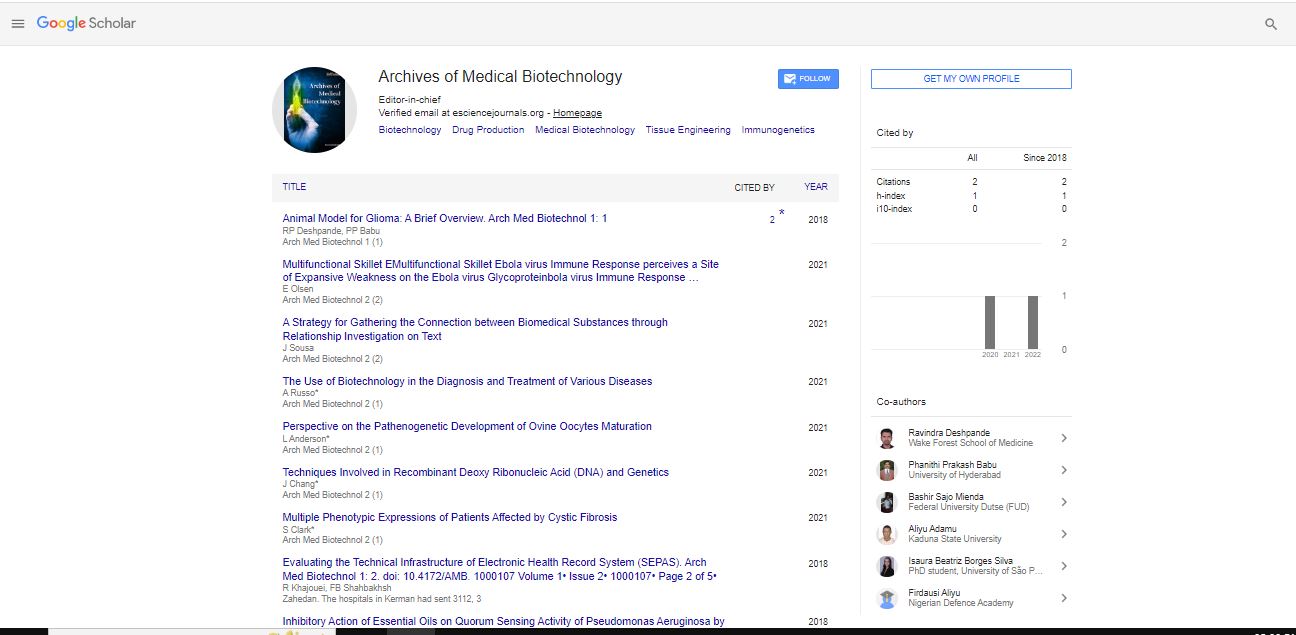Editorial, Arch Med Biotechnol Vol: 6 Issue: 1
Nanobiotechnology in Drug Delivery
Rajesh Menon*
Department of Nanoscience and Biotechnology, Amrita Vishwa Vidyapeetham, Coimbatore, India
- *Corresponding Author:
- Rajesh Menon
Department of Nanoscience and Biotechnology, Amrita Vishwa Vidyapeetham, Coimbatore, India
E-mail: rajesh.menon@amrita.edu.in
Received: 01-Mar-2025, Manuscript No. AMB-25-170191; Editor assigned: 4-Mar-2025, Pre-QC No. AMB-25-170191 (PQ); Reviewed: 20-Mar-2025, QC No AMB-25-170191; Revised: 26-Mar- 2025, Manuscript No. AMB-25-170191 (R); Published: 30-Mar-2025, DOI: 10.4172/amb.10000
Citation: Rajesh Menon, Department of Nanoscience and Biotechnology, Amrita Vishwa Vidyapeetham, Coimbatore, India. Arch Med Biotechnol 6:1.
Copyright: © 2025 Rajesh Menon, this is an open-access article distributed under the terms of the Creative Commons Attribution License, which permits unrestricted use, distribution, and reproduction in any medium, provided the original author and source are credited.
INTRODUCTION
Nanobiotechnology combines nanotechnology with biotechnology to design novel drug delivery systems. In India, it is emerging as a powerful tool to enhance drug efficacy, reduce toxicity, and improve patient compliance [1].
Applications in Drug Delivery
Nanoparticles, liposomes, and polymeric carriers are being developed for targeted drug delivery in cancer, tuberculosis, and neurological diseases. For instance, nanoparticle-based formulations of anti-TB drugs enhance bioavailability and reduce dosing frequency [2]. In oncology, nanocarriers allow controlled release of chemotherapeutics directly at tumor sites, minimizing systemic toxicity [3]. Nano-based insulin delivery systems are also being explored for diabetes management [4].
Challenges and Future Directions
Barriers include high production costs, regulatory challenges, and limited clinical translation of lab-based innovations. However, ongoing collaborations between academic institutes and pharmaceutical companies in India are accelerating nanomedicine development [5].
Conclusion
Nanobiotechnology holds immense potential to revolutionize drug delivery. With Indiaâ??s growing biotech sector, nanomedicine can play a pivotal role in addressing both infectious and chronic diseases.
REFERENCES
- Kumar CSSR. Nanotechnology in medicine. J Pharm Bioallied Sci 2012;4: 134–141.
- Sharma A. Nanoparticle drug delivery for tuberculosis. Indian J Tuberc 2016;63: 100–106.
- Jain RK. Nano-based cancer therapy. Indian J Cancer 2010;47: 232–236.
- Patel P. Nano-insulin delivery: advances. Indian J Endocrinol Metab 2015;19: 731–738.
- Menon R. Nanobiotechnology research in India. Curr Sci 2018;114: 955–962.
 Spanish
Spanish  Chinese
Chinese  Russian
Russian  German
German  French
French  Japanese
Japanese  Portuguese
Portuguese  Hindi
Hindi 